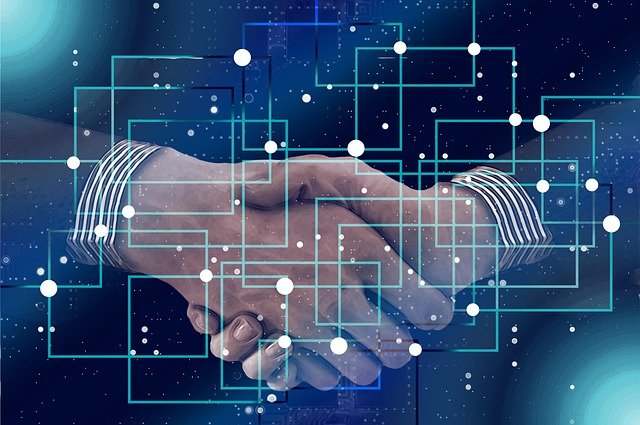In 2025, artificial intelligence (AI) is transforming robotics, enabling machines to perform complex tasks with unprecedented intelligence, adaptability, and efficiency. From industrial automation to home security and healthcare, AI-powered robotics is reshaping industries and enhancing everyday life. This article explores how AI is driving this revolution, making robotics smarter, more versatile, and accessible.
The Role of AI in Modern Robotics
AI equips robots with the ability to perceive, learn, and make decisions in real time. By integrating machine learning, computer vision, and natural language processing, robots can process vast amounts of data, adapt to dynamic environments, and interact seamlessly with humans. In 2025, advancements in AI algorithms, edge computing, and sensor technology are pushing robotics to new heights.
Key Ways AI is Revolutionizing Robotics
1. Enhanced Perception and Computer Vision
AI-powered computer vision allows robots to interpret their surroundings with human-like precision. In 2025, robots use advanced cameras and sensors to recognize objects, faces, and gestures, even in challenging conditions like low light or cluttered spaces. For example:
- Industrial Robotics: Robots in manufacturing plants identify defects in products with 99% accuracy, reducing waste and improving quality control.
- Home Security: AI-driven drones and cameras distinguish between residents, visitors, and potential intruders, minimizing false alarms.
2. Autonomous Navigation and Decision-Making
AI enables robots to navigate complex environments without human intervention. Machine learning models process data from LiDAR, sonar, and GPS to map surroundings and avoid obstacles. In 2025:
- Delivery Robots: Autonomous delivery bots, like those used by Amazon, navigate urban streets to deliver packages, adapting to traffic and pedestrian patterns.
- Warehouse Automation: Robots in logistics centers optimize paths to pick and pack orders, boosting efficiency by up to 30% compared to traditional systems.
3. Human-Robot Collaboration
AI fosters safer and more intuitive collaboration between humans and robots. Natural language processing and gesture recognition allow robots to understand commands and respond naturally. In 2025:
- Healthcare: Surgical robots assist doctors with precision tasks, interpreting verbal instructions and adjusting movements in real time.
- Service Industry: AI-powered robotic assistants in retail or hospitality settings respond to customer queries, enhancing user experience.
4. Adaptive Learning and Personalization
AI enables robots to learn from experience, improving performance over time. Reinforcement learning and neural networks allow robots to adapt to new tasks without extensive reprogramming. In 2025:
- Domestic Robots: Robotic vacuum cleaners learn a home’s layout, optimizing cleaning patterns and avoiding obstacles like furniture or pets.
- Industrial Applications: Robots in factories adjust to new production lines, reducing setup times by 40% through self-learning algorithms.
5. Predictive Maintenance and Reliability
AI-driven predictive analytics help robots monitor their own health, identifying potential issues before they cause failures. In 2025:
- Manufacturing: Industrial robots use AI to predict wear on components, scheduling maintenance to prevent costly downtime.
- Home Robotics: Smart home devices, like security robots, alert users to low battery levels or software updates, ensuring continuous operation.
AI Robotics Applications in 2025
Industrial Automation
AI-powered robots streamline manufacturing, logistics, and supply chains. Collaborative robots (cobots) work alongside humans, handling repetitive tasks with precision. In 2025, factories use AI to optimize workflows, reducing operational costs by 20-30% and increasing output.
Healthcare Innovations
AI-driven robots assist in surgeries, rehabilitation, and eldercare. For example, robotic exoskeletons powered by AI help patients regain mobility by adapting to their movements. In 2025, hospitals report a 15% improvement in surgical outcomes due to AI-enhanced robotic precision.
Home Security and Convenience
AI-powered robotic drones and cameras patrol homes, using facial recognition and anomaly detection to enhance security. Smart home assistants, integrated with AI, control devices like lights and thermostats, learning user preferences for personalized comfort.
Agriculture and Environmental Monitoring
AI robots revolutionize farming by planting, harvesting, and monitoring crops with precision. Drones equipped with AI analyze soil health and optimize irrigation, increasing crop yields by up to 25% while reducing water usage.
Challenges and Solutions
While AI is transforming robotics, challenges remain:
- Ethical Concerns: Autonomous robots raise questions about accountability. Solution: Implement transparent AI decision-making frameworks and strict regulatory guidelines.
- Cybersecurity Risks: Connected robots are vulnerable to hacking. Solution: Use end-to-end encryption and regular software updates to secure systems.
- High Costs: Advanced AI robotics can be expensive. Solution: Modular designs and cloud-based AI reduce costs, making robotics accessible to smaller businesses and households.
The Future of AI and Robotics in 2025
In 2025, AI is making robotics more autonomous, intuitive, and efficient. Advancements in edge AI, where processing happens on-device, reduce latency and improve performance in real-time applications. Additionally, 5G connectivity enables faster data transfer, allowing robots to communicate seamlessly in complex environments. As AI continues to evolve, we can expect even greater integration of robotics into daily life, from personalized home assistants to fully autonomous industrial systems.
Conclusion
AI is revolutionizing robotics in 2025 by enabling smarter perception, navigation, and human interaction. From enhancing industrial efficiency to improving home security and healthcare, AI-powered robots are transforming how we live and work. By addressing challenges like cybersecurity and cost, businesses and homeowners can fully embrace these innovations, unlocking a future where robotics and AI work hand-in-hand to create safer, more efficient environments.
